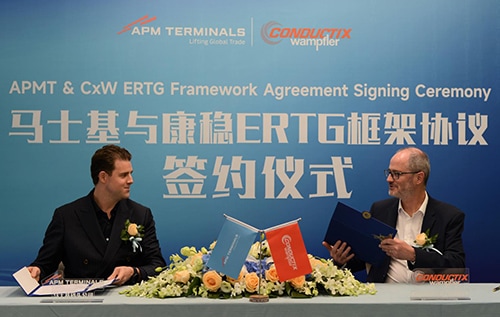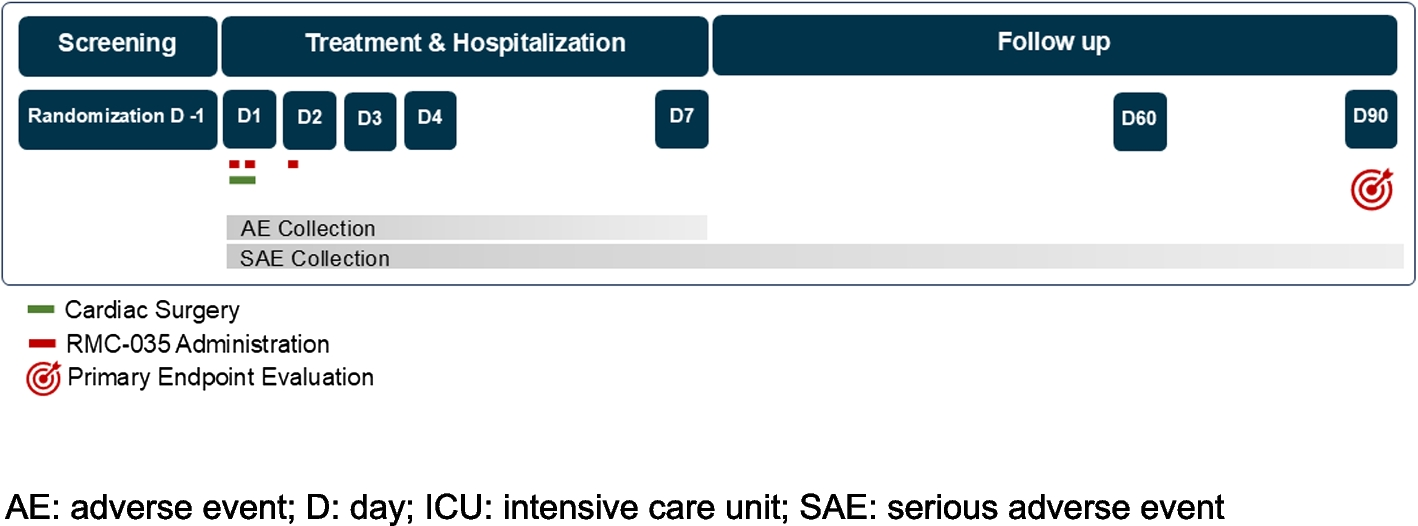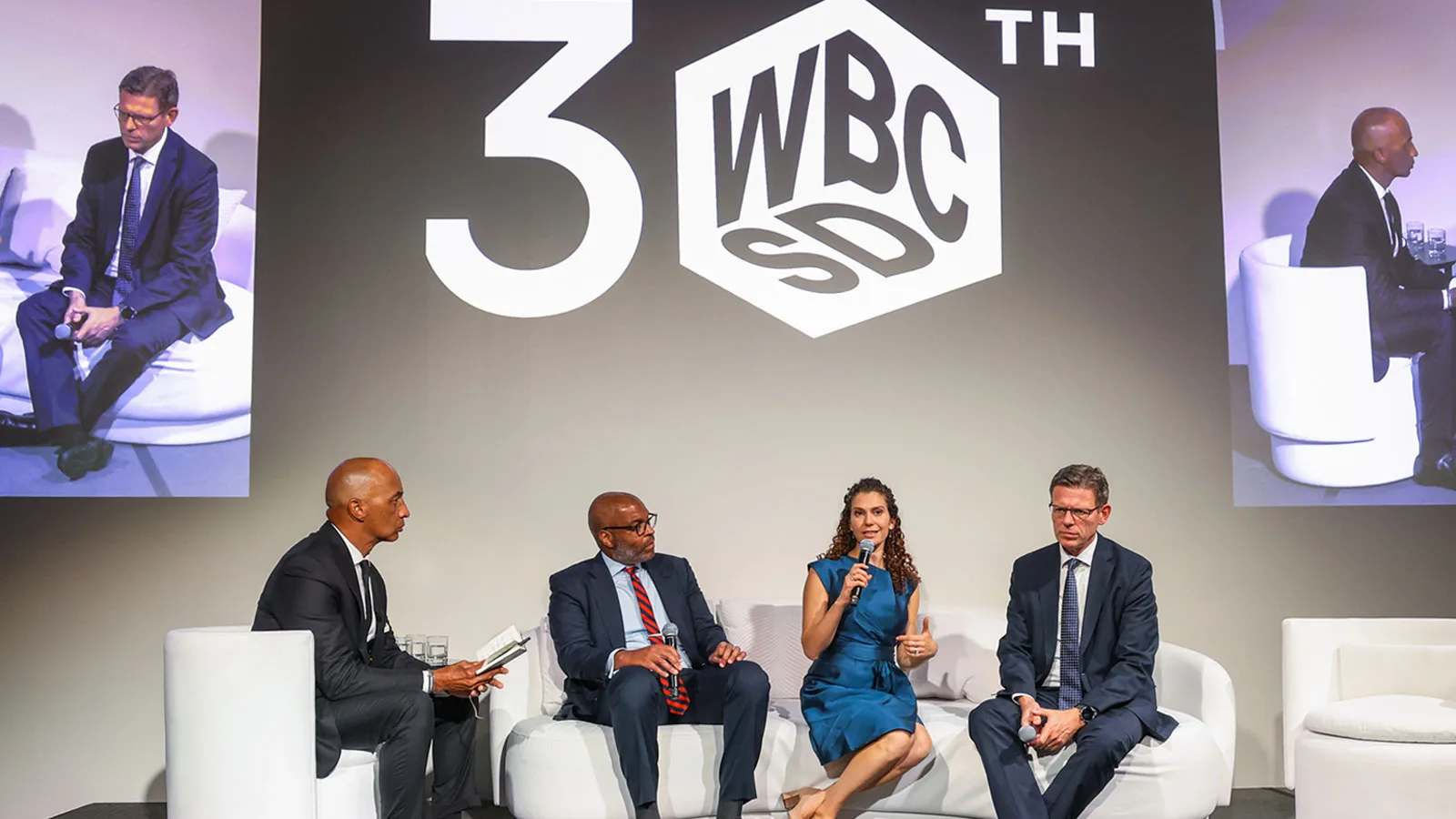Down here on Earth we don’t usually notice, but the Sun is frequently ejecting huge masses of plasma into space. These are called coronal mass ejections (CMEs). Using the NASA/ESA Hubble Space Telescope and ground-based telescopes in Japan…
Blog
-

Tryptophan deficiency in breast milk may explain health challenges in children born to mothers with HIV
A new UCLA study reveals that breast milk from women living with HIV contains significantly lower levels of tryptophan, an essential amino acid likely important for infant immune function, growth, and brain development. This…
Continue Reading
-

APM Terminals and Conductix-Wampfler sign third collaboration agreement
At a special ceremony on 28 October 2025, Conductix-Wampfler and APM Terminals signed a framework purchase agreement for rubber tire gantry crane (RTG) electrification products and terminal operations services.
Grant Morrison, Global Head of Asset Category Management at APM Terminals, and François Bernès, Chief Executive Officer at Conductix-Wampfler signed the agreement in Shanghai The framework agreement was signed by François Bernès, Chief Executive Officer at Conductix-Wampfler and Grant Morrison, Global Head of Asset Category Management at APM Terminals. This was conducted at Conductix-Wampfler’s regional head office in Shanghai and marks the third collaboration agreement between the two companies.
Over the past 14 years, Conductix-Wampfler has supplied APM Terminals with 413 energy supply systems for eRTGs (new and retrofitted) and 116 battery systems for its operations. The deployment of eRTGs with grid power supply or battery systems is a core initiative driving port decarbonisation. eRTGs eliminate carbon emissions at the source during yard operations, while the battery systems enable either full zero-emission operations (FE-RTG) or provide an optimal balance of reduced emissions and operational flexibility (Hybrid-RTG).
François Bernès, Chief Executive Officer at Conductix-Wampfler, said, “This renewed partnership with APM Terminals provides Conductix-Wampfler with a strategic anchor and practical platform for our long-term vision. As a strategic partner, we will continue to fully support APM Terminals in achieving its energy-saving, emissions-reduction, and carbon-neutral goals, deeply engaging in the port operator’s decarbonisation journey and contributing our expertise to drive sustainable transformation in the industry.”
As a leading global terminal operator, APM Terminals is working towards achieving net-zero greenhouse gas emissions by 2040. Shifting from fossil-fuelled equipment in its ports to battery-electric container handling equipment is the main lever for reducing its scope 1 GHG emissions. For its scope 2 emissions, the ambition is to transition to 100% renewable energy by 2030.
APM Terminals has implemented large-scale “diesel-to-electric” conversions at multiple terminals worldwide, replacing diesel-powered yard cranes with electric-powered ones to reduce emissions at the source. It also actively deploys and utilises fully electric and hybrid port handling equipment and invests in renewable energy sources such as solar power to supply electricity to its terminals.
Grant Morrison, Global Head of Asset Category Management, APM Terminals, commented, “This framework purchase agreement signifies our continued partnership with Conductix-Wampfler, which will contribute to delivering on our ambitious emissions reduction targets. We look forward to exploring more projects with Conductix-Wampfler as we work towards a more decarbonised future.”
Continue Reading
-

iOS 26.1 Brings 4 New iPhone Customization Features
Apple’s latest iOS 26.1 update is shaping up to be one of the most significant iPhone customization releases in recent memory. While iOS 26 brought the revolutionary Liquid Glass design that transformed the entire visual experience, the upcoming…
Continue Reading
-

Gotham Film Awards Nominations: ‘One Battle After Another’ Leads With a Record Six Nods – The Hollywood Reporter
- Gotham Film Awards Nominations: ‘One Battle After Another’ Leads With a Record Six Nods The Hollywood Reporter
- The 2025 Gotham Award (GOTHAM) Nominations Next Best Picture
- Gotham Nominations 2025: One Battle After Another, Adam Sandler
Continue Reading
-
Just a moment…
Just a moment… This request seems a bit unusual, so we need to confirm that you’re human. Please press and hold the button until it turns completely green. Thank you for your cooperation!
Continue Reading
-

POINTER: study protocol for a phase 2b, randomised, placebo-controlled, double-blind, parallel group dose-finding clinical study to evaluate the efficacy of RMC-035 on renal function and safety, in participants at high risk for kidney injury, following open-chest cardiac surgery | Trials
Explanation for the choice of comparators {6b}
The double-blind placebo-controlled design allows for an unbiased assessment of efficacy and safety. The use of placebo is justified by the intent to assess absolute efficacy and safety of RMC-035 and…
Continue Reading
-

How to cancel your HBO Max subscription
It keeps happening. HBO Max , around 16 months . If your debit card is feeling the pain, or if you’re just not excited about that weird nobody asked for, you may decide to take a break from the . Here’s everything you need to know about…
Continue Reading
-

The Profit of Preparedness: Resilience in Supply Chains, Finance, and AI
After an unprecedented summer marked by intense heatwaves, devastating floods, and disrupted logistics, the concept of resilience has become more than just a theoretical idea; it’s now a critical concern for boardrooms and a balance-sheet question. The dialogue has evolved from simply asking, “How do we demonstrate responsibility?” to a more pressing question: “How can we accurately quantify and account for climate-related costs at the product level, rather than letting these costs slip through the cracks?”
COP30 in Brazil stands out as a pivotal moment where global challenges and the need for a transition come into focus. The leaders keeping an eye on aren’t just those making sweeping promises, but rather those integrating resilience into their core business operations, across supply chains, finance, and with the help of AI.
These three value drivers are where sustainability equals ROI:
1. Supply chains, where your resilience is tested first
Supply chains are where the operational reality of disruptions plays out. Shipment reroutes, altered deadlines, and rising raw material costs translate to balance sheets as premiums, downtime, and cashflow.
Companies are feeling the impact: more than half of firms surveyed by Morgan Stanley experienced climate impacts on operations within the past year, including increased costs, worker disturbance, and revenue losses. BCG estimates that climate-related supply chain disruptions already cost companies an average of $182 million annually.
These shocks are not abstract. When a drought shrank the River Rhine in 2022, shipping capacity fell by half, forcing costly reroutes for European manufacturers. US agribusiness faced similar disruptions when the Mississippi River levels dropped from 2022-2023, delaying exports and inflating logistics costs.
As climate adaptation and mitigation climb up corporate priority lists, the agenda of today’s COO is shifting. Here’s my view on the key steps that unlock the real business value of sustainability:
- Gain full visibility. Investing in tools that increase traceability and real-time awareness of emissions and resources is crucial; this will allow you to pinpoint vulnerabilities, diversify sourcing, strengthen transparency and anticipate risks before they escalate.
- Link resilience metrics to measurable outcomes. Your value chain is your source of measurable sustainability value. Metrics that go beyond avoiding losses (i.e. reduced insurance premiums, increased operational agility, customer trust) turn this visibility into actionable insight. SAP Customer Nestlé has strengthened their resilience with real-time, connected operations across its global supply chain with a cloud-first environment and integrated analytics.
With tools in place and metrics aligned to outcomes, COOs can optimize value chains beyond just efficiency: diversifying suppliers in geographies with higher exposure to disruptions, building redundancy where needed, and securing future advantage.
Resilience isn’t just defensive. A supply chain that adapts faster than your competitors’ is a growth driver. Redesigned value chains and networks transform risk management into a source of long-term ROI, and sustainability data is an untapped lever.
2. Finance, the place climate risk becomes line-item reality
If supply chains are where vulnerabilities show up operationally, finance is where they land with impact and finality. Today’s CFO cannot steer the business on carbon numbers alone. Making this shift means answering questions like:
- “How do we integrate sustainability data into the same systems that manage profit centers, cost centers, and balance sheets?” Many disclosures still rely on proxy data, such as industry averages, which can result in deviations of 30-40% or more from real values. SAP Green Ledger brings granular carbon insights into core finance processes, enabling organizations to drive decarbonization and operationalize sustainability at scale. This means companies can understand not only how much carbon they emit, but also how it affects risk exposure and margins.
- “How do we measure progress toward decarbonization goals to strengthen our position in carbon-sensitive markets?” Those with verifiable sustainability data have preferential access to capital. Sustainable bonds and loans surpassed $1.6 trillion in 2024 as demonstrable decarbonization strategies often lowered financing costs.
Companies that treat sustainability data as a financial asset, connected to auditable accounting principles, are transforming sustainability from a compliance exercise into a growth driver.
The organizations that get this right are already lowering the cost of capital and outperforming their peers.
3. AI, your resilience accelerator
AI plus sustainability is a classic ROI equation. One type of return on investment is how much better you get at predicting physical climate risk, then prepare and respond with speed and agility. According to McKinsey, AI (especially generative AI) could generate $2.6 to $4.4 trillion annually in economic benefits, and up to $6.1 to $7.9 trillion when considering full productivity impact across industries.
However, there is a gap between AI adoption and opportunity. According to Accenture, only 14% of companies today are using AI to reduce their carbon emissions, but 65% believe they will do this in the future.
Opportunities for AI adoption to drive ROI and drive competitive advantage are huge:
AI streamlines supplier data, automatically handles permits, and reduces compliance costs. SAP capabilities such as AI-assisted permit management and AI-assisted compliance information processing improve speed and accuracy of information extraction and processing, while AI-assisted ESG report generation allows you to report on your progress in minutes. Automotive industry company Martur Fompak has used business AI to achieve a 52% reduction in transportation-related carbon emissions and to calculate carbon footprints more than 50 times faster. Another example is msg Global Solutions AG, whose Greenwashing Detector solution leverages generative AI to validate reports and detect potential greenwashing.
Unlock enterprise-wide intelligence for long-term ROI
For companies that go a step further to deeply ingrain AI implementation, AI contextualizes and integrates sustainability data across ERP systems to inform decisions on risk, resilience, and opportunity. Tools like AI-enabled supplier validation, AI-powered emissions factor mapping, and AI-assisted carbon emission analysis help identify risk and opportunity so that you can act on sustainability across the enterprise. This drives both day-to-day operations, like smarter procurement, as well as long-term strategy, like identifying and reducing emissions at the source.
In times of disruption, the early mover captures the value. AI isn’t just an efficiency tool, but a proactive warning system enabling you to see risk sooner, act faster, and optimize better.
Climate risk doesn’t live in theory. It shows up in supply chains, operations, and increasingly, line items on financial statements. Resilience is no longer just a safeguard, but a source of growth, efficiency, and competitive edge.
At COP30, leaders across different industries are preparing for a new normal, focusing on managing environmental, regulatory, and market risks as their top investment priorities.
More information about SAP Sustainability can be found here.
Continue Reading
-
Just a moment…
Just a moment… This request seems a bit unusual, so we need to confirm that you’re human. Please press and hold the button until it turns completely green. Thank you for your cooperation!
Continue Reading
